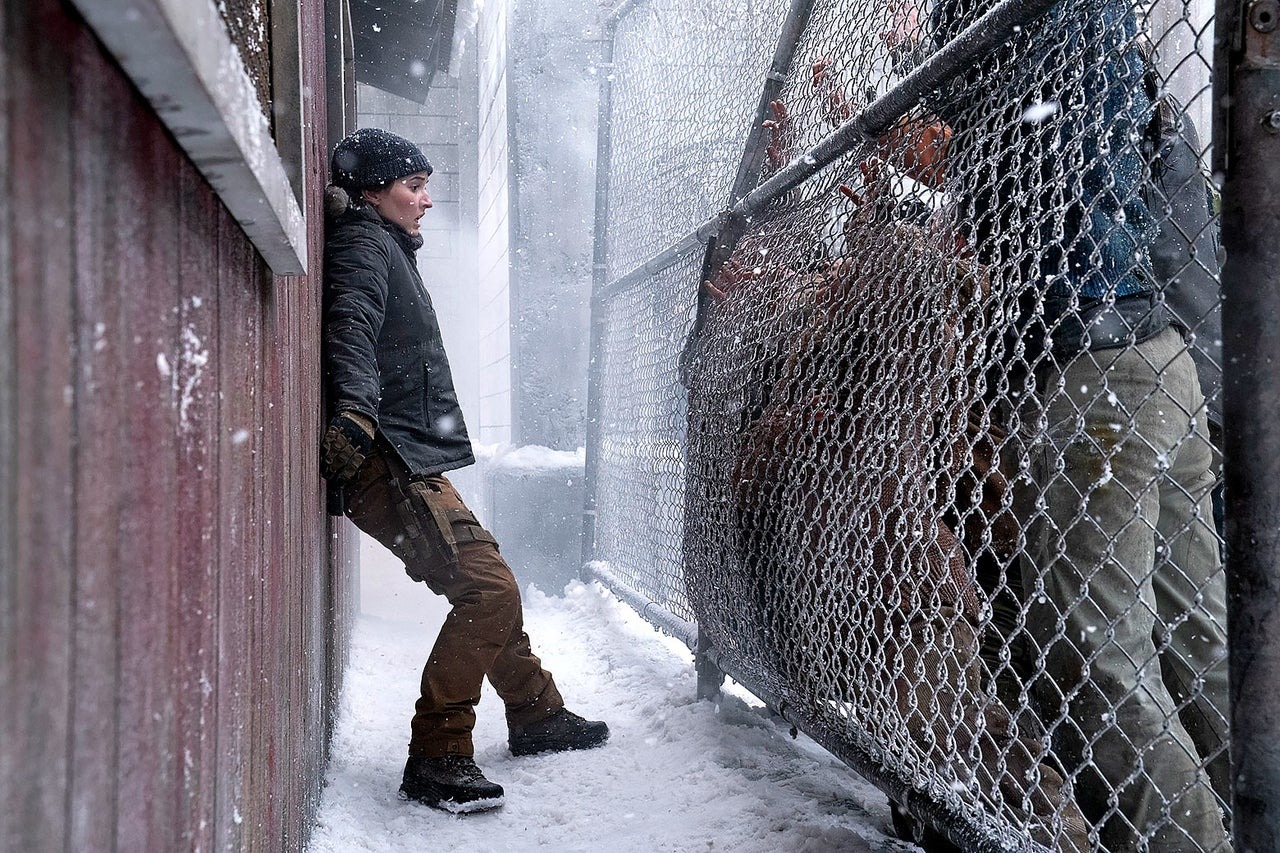The Last of Us _ Not since the Red Wedding have fans of the HBO series had such a big secret to keep. When The Last of Us Part II was released in June 2020, gamers were shocked—and sometimes outraged—to discover that Joel, the protagonist of the game’s wildly successful predecessor, died not at the hands of a horrific fungus-infected zombie but by a young woman named Abby, who beat him to death with a golf club.
The twist was endlessly discussed and debated by gamers, but they managed to keep it a secret even after the first season of the TV adaptation became a huge success.
For weeks, fans of the game have been speculating where a pivotal moment in the show’s second season would take place, referring to it with winking code words like “Abby’s golf game,” but on Sunday night, the timelines merged and gamers and viewers could finally grieve together.
Created by Chernobyl’s Craig Mazin and the game’s creative director Neil Druckmann, the HBO series stayed true to the book, even replicating moments frame-for-frame, like the kiss between Ellie (Bella Ramsey) and Dinah (Isabella Merced) on the dance floor in the first episode of Season 2. But “The Valley Through” (which became known as “The Episode Where Joel Gets Murdered”) made significant changes to the plot, interweaving Joel’s death with a horde of infected people attacking a heavily guarded human encampment in Jackson, Wyoming.
With Joel (Pedro Pascal) incapacitated and Ellie and Dinah out on patrol, the battle for Jackson primarily involves characters we’ve only just met or barely had any time with, like Joel’s brother Tommy (Gabriel Luna) and his wife Maria (Rutina Wesley). But directed by former Game of Thrones director Mark Milaud, Jackson’s battle for survival still creates a gripping tension, with the future of humanity hanging in the balance as much as Joel’s.
Joel’s death in The Last of Us is harrowing and deliberate—carried out with chilling resolve by Abby, played by Kaitlyn Dever. She’s spent five years hunting him down, driven by the need to avenge her father’s death. Unlike shows like The Walking Dead, which showed graphic scenes that drove viewers away, The Last of Us handles the violence with restraint. After Abby shoots Joel in the leg, the camera cuts away as she chooses a golf club from a bag in the abandoned lodge where she and her Firefly group are hiding.
But the aftermath says enough. Just one look at Joel—bloodied, shaking, and broken—and the splintered shaft of the club, tells the audience all they need to know. As the pieces click into place and Joel realizes Abby is the daughter of the doctor he killed years ago in Salt Lake City, he accepts his fate. He doesn’t plead or fight—he just tells her to finish it.
Meanwhile, Ellie arrives at the lodge, only to be captured by Abby’s group. She’s forced to witness the brutal scene. The man who became a father figure to her is coldly murdered before her eyes, his body barely reacting as Abby drives a jagged piece of metal into his neck. It’s a devastating moment that lingers far beyond the screen.
The events of Joel’s murder kick off the second half of The Last of Us, as Ellie embarks on a quest for revenge that nearly consumes her. In Season 1, Joel and Ellie trek across what’s left of America in search of a cure for a plague that nearly wiped out humanity.
Hope is shattered when Joel discovers that the only way the Fireflies can create a cure using Ellie’s natural immunity to the plague is to kill her first. (As the doctor who performed the fatal surgery, Abby’s father isn’t as innocent as she thinks he is.) Season 2 follows the theme of lost hope, with Ellie unable to move beyond her rage and live the life that Joel has fought, and even killed, for her.
Joel and Ellie, two scarred souls shaped by loss and survival, have long lived on the fringes—trusting no one and relying only on each other. Their journey through a broken world has taught them that people often bring more danger than safety. From ambushes to betrayal to a terrifying encounter with a group of cannibals who saw Ellie as nothing more than meat, every experience has reinforced that lesson.
But the town of Jackson offers a rare counterpoint. It proves that community, trust, and cooperation can still exist—even in a world overrun by chaos. Alone, the townspeople wouldn’t last long against the endless waves of infected that crash against their walls. But together, they fight back, using creative and brutal tactics—like dousing enemies in oil and setting them ablaze—that feel more medieval than modern. It’s a defense strategy that wouldn’t feel out of place in Game of Thrones, especially with the hulking, monstrous “bloater” playing the part of a Westerosi giant.
Their hard-won survival is a quiet victory, a glimmer of hope in the midst of darkness. It softens, if only slightly, the emotional blow of Joel’s tragic end. More importantly, it highlights a powerful truth: there is strength in unity, and isolation—no matter how safe it feels—comes with a heavy cost.

